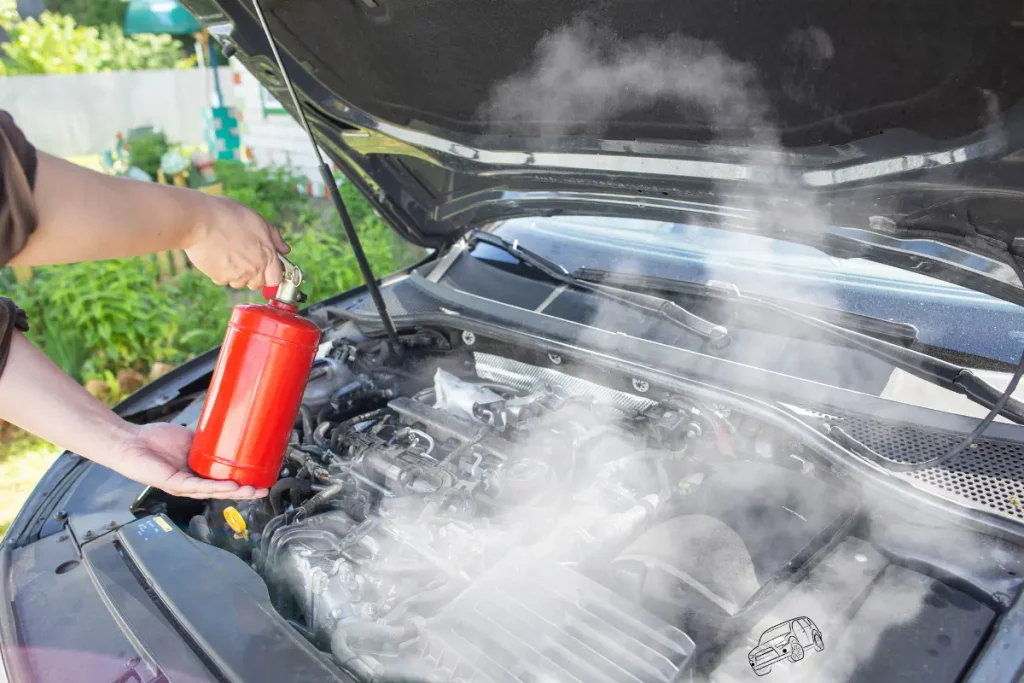This article is from the Automotivean website and discusses about How to Find Automotive Short Circuits.
A short circuit occurs when an electrical current deviates from its intended path, taking a shorter route due to a fault in the circuit. This can result in excessive current flow, overheating, and potential damage to the electrical system.
Identifying short circuits in automotive systems is crucial to prevent potential safety hazards, electrical fires, and damage to vehicle components. Timely detection and resolution of short circuits not only ensure the vehicle’s optimal performance but also prolong its lifespan.
Signs of a short circuit include blown fuses, melted wires, sparks or smoke coming from the electrical system, malfunctioning electronics, and in some cases, a drained or dead battery.
Understanding Automotive Electrical Systems
Modern vehicles feature complex electrical systems that power various components, from the engine to the entertainment system. These systems rely on interconnected wiring harnesses, connectors, and fuses to function efficiently.
Components such as wiring harnesses, connectors, relays, switches, and sensors are common culprits for short circuits in automotive systems. Moisture, heat, vibration, and wear and tear can exacerbate the risk of short circuits.
Short circuits can lead to erratic behavior in-vehicle systems. Including engine stalling, dimming lights, non-functional electronics, and in extreme cases, fires. Identifying and resolving short circuits promptly is essential to maintain the vehicle’s reliability and safety.
Tools Needed for Short Circuit Diagnosis
- Multimeter:
- The Swiss Army Knife for Automotive Electricians: A multimeter is a universal tool that can measure voltage, current, and resistance in electrical circuits. It is indispensable for diagnosing short circuits, performing continuity tests, and evaluating the health of automotive electrical components.
- Circuit Testers and Probes: Circuit testers and probes are essential for pinpointing short circuits, testing for continuity, and detecting voltage drops across different sections of the wiring system.
- Wiring Diagrams:
- Decoding the Electrical Blueprint: Wiring diagrams provide a visual representation of the vehicle’s electrical system. Highlighting the connections between components, fuses, and relays. Understanding these diagrams is crucial for tracing the path of current flow and diagnosing short circuits effectively.
Step-by-Step Guide to Finding Short Circuits
Initial Inspection:
- Visually Identifying Potential Issues: Start by conducting a visual inspection of the vehicle’s wiring, connectors, and components for signs of damage, corrosion, or wear. Look for exposed wires, melted insulation, or burnt connectors as potential indicators of a short circuit.
Testing Fuses:
- Unveiling Clues in the Fuse Box: Check the vehicle’s fuse box to identify any blown fuses or fuses that repeatedly blow, indicating a possible short circuit in the corresponding circuit.
Utilizing the Multimeter:
Pinpointing the Culprit:
- Voltage Drop Testing: Perform voltage drop tests across various components and connectors to identify areas with abnormal voltage levels, which can indicate a short circuit.
- Continuity Testing: Use the multimeter to check for continuity between points in the wiring system, ensuring no unintended connections or breaks are causing a short circuit.
Isolating Sections:
- Breaking Down the Wiring System: Divide the wiring system into sections and test each section individually to isolate the area where the short circuit is occurring. This systematic approach helps narrow down the search and locate the fault more efficiently.
Common Causes of Automotive Short Circuits
- Frayed Wiring: Frayed or damaged wiring is a common cause of short circuits, as exposed conductors can come into contact with each other or metal components, creating unintended paths for current flow.
- Faulty Connectors and Terminals: Loose or corroded connectors and terminals can lead to poor electrical connections, increased resistance, and potential short circuits. Inspect and clean connectors regularly to prevent such issues.
- Water Damage:
- A Sneaky Saboteur: Moisture intrusion can cause corrosion, insulation breakdown, and short circuits in the electrical system. Protecting vulnerable components from water exposure is essential to prevent these issues.
- Aging Components:
- When Time Takes Its Toll: Over time, electrical components may degrade, leading to weakened insulation, worn-out connectors, and increased susceptibility to short circuits. Regular maintenance and proactive replacement of aging components can mitigate this risk.
Tips and Tricks for Efficient Short Circuit Detection
- Prioritizing High-Risk Areas in the Vehicle: Focus on checking high-risk areas like engine bay, fuse box, and wiring tackles near heat sources. And areas prone to moisture ingress where short circuits are more likely to occur.
- Utilizing Diagnostic Trouble Codes (DTCs): Scan the vehicle’s onboard diagnostic system for error codes related to electrical faults. Which can provide useful clues to narrow down the search for a short circuit.
- The Power of Systematic Testing: Divide and Conquer: Approach short circuit diagnosis methodically by systematically testing different components and sections of the wiring system, eliminating possibilities one by one until the fault is identified.
Frequently Asked Questions (FAQs) about How to find Automotive Short Circuits
What are the primary symptoms of an automotive short circuits?
Answer: The primary symptoms of an automotive short circuit include blown fuses, erratic behavior in electrical components, smoke or sparks, and in some cases, a dead battery.
Can a short circuit cause permanent damage to the vehicle?
Answer: Yes, a short circuit can cause permanent damage to the vehicle’s electrical components, wiring, and in extreme cases, lead to fires or complete system failure.
How often should I check for short circuits in my car?
Answer: It is advisable to conduct routine inspections of the vehicle’s electrical system as part of regular maintenance to detect and address short circuits promptly.
Are there preventive measures to avoid short circuits?
Answer: Regular maintenance, keeping connectors clean and secure, protecting wiring from damage, and avoiding moisture exposure can help prevent short circuits in automotive systems.
Should I attempt to fix a short circuit myself, or seek professional help?
Answer: While some basic short circuit issues can be resolved by DIY enthusiasts with the right tools and knowledge, complex or recurring short circuits may require the expertise of a professional automotive electrician.
How do you find a short circuit in a car?
Answer: Finding a short circuit involves a systematic approach of visual inspection, testing fuses, using a multimeter for continuity and voltage drop tests, and isolating sections of the wiring system to pinpoint the fault.
What is the best way to find a short circuit?
Answer: The best way to find a short circuit is to follow a structured diagnostic process that involves using the right tools, analyzing symptoms, and eliminating potential causes step by step until the fault is identified.
What are the symptoms of Automotive Short Circuits in a car?
Answer: Symptoms of an Automotive Short Circuits include blown fuses, electrical malfunctions, smoke or sparks, dimming lights, and in severe cases, a dead battery or fire hazard.
How do you test for a short to ground in a car?
Answer: Testing for a short-to-ground involves using a multimeter to measure resistance between the positive terminal and the vehicle’s chassis or ground points, identifying any unintended paths for current flow.
Case Studies: Real-Life Automotive Short Circuits Scenarios
Case 1:
- Mysterious Battery Drain: In this scenario, a vehicle experiences an unexplained battery drain due to a hidden short circuit in the wiring harness, requiring a detailed diagnosis to locate and rectify the issue.
Case 2:
- Headlights Flickering Intermittently: Intermittent flickering of headlights is often caused by loose connectors, corroded terminals, or a short circuit in the lighting circuit, necessitating thorough inspection and testing to resolve.
Case 3:
Non-Responsive Electronics After Rain: Water damage from rain infiltration causes non-responsive electronics in the vehicle, leading to short circuits that disrupt the normal function of components until the source of the issue is addressed.
Importance of Timely Short Circuit Resolution– – Automotive Short Circuits
- Preventing Further Damage to Vehicle Components: Timely detection and resolution of short circuits prevent further damage to electrical components, wiring, and sensitive electronic systems, preserving the vehicle’s integrity and performance.
- Improve Safety:
- Avoiding Fire Hazards: Short circuits can pose fire hazards in vehicles if left unchecked, making early detection and repair essential to safeguard the vehicle and occupants from potential safety risks.
- Cost-Effective Repairs:
- Why Early Detection Matters: Identifying short circuits early can save car owners from costly repairs and component replacements, as prolonged short circuits can lead to extensive damage and higher repair expenses.
Seeking Professional Help- Automotive Short Circuits
- When DIY Methods Aren’t Enough: If DIY methods fail to resolve persistent short circuit issues or if the diagnosis becomes complex, seeking help from a professional automotive electrician with expertise in electrical systems is recommended.
- Choosing the Right Automotive Electrician: When seeking professional help for short circuit diagnosis and repairs, select a certified and experienced automotive electrician who uses proper diagnostic tools and follows industry standards for electrical troubleshooting.
- Communication Tips:
- Conveying Symptoms Effectively: When consulting with a professional automotive electrician, effectively communicate the symptoms observed, any previous attempts at diagnosis or repair, and provide relevant details to aid in the accurate diagnosis of the short circuit.
Final Thought about How to Find Automotive Short Circuits
The identification and resolution of Automotive Short Circuits in automotive systems are essential for maintaining vehicle performance, safety, and longevity.
By understanding the causes, symptoms, diagnostic methods, and prevention strategies for short circuits, car owners can confidently troubleshoot electrical issues and protect their vehicles from potential hazards.
Prioritizing regular inspections, proactive maintenance and prompt resolution of short circuits contribute to the overall health and reliability of the vehicle’s electrical system, ensuring a safe and efficient driving experience for car owners.




